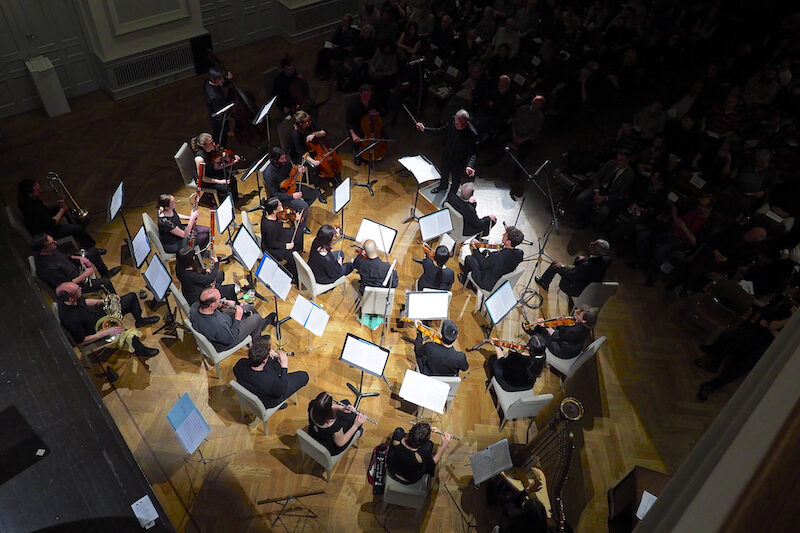Concerts
Cage, Kotik, and Eastman:
1972 / 2017
John Cage: Song Books I, II (1970)
Petr Kotik: There is Singularly Nothing (1971-72)
Julius Eastman: Macle (1971-72)
Voices: Kamala Sankaram, Jeffrey Gavett, Jake Ingbar, Adrian Rosas, Nathan Repasz;
Petr Kotik (flute, voice); Christopher McIntyre (trombone, voice); Will Lang (trombone, voice)
December 2, 2017, 3:00 p.m. @ Willow Place Auditorium, 26 Willow Pl., Brooklyn
Free admission with suggested donation
December 7, 2017, 8:00 p.m. @ Paula Cooper Gallery (Manhattan)
Click here to purchase tickets
Advance: $15, $10 for students/seniors, Door: $20/$15 (cash/check only at door)
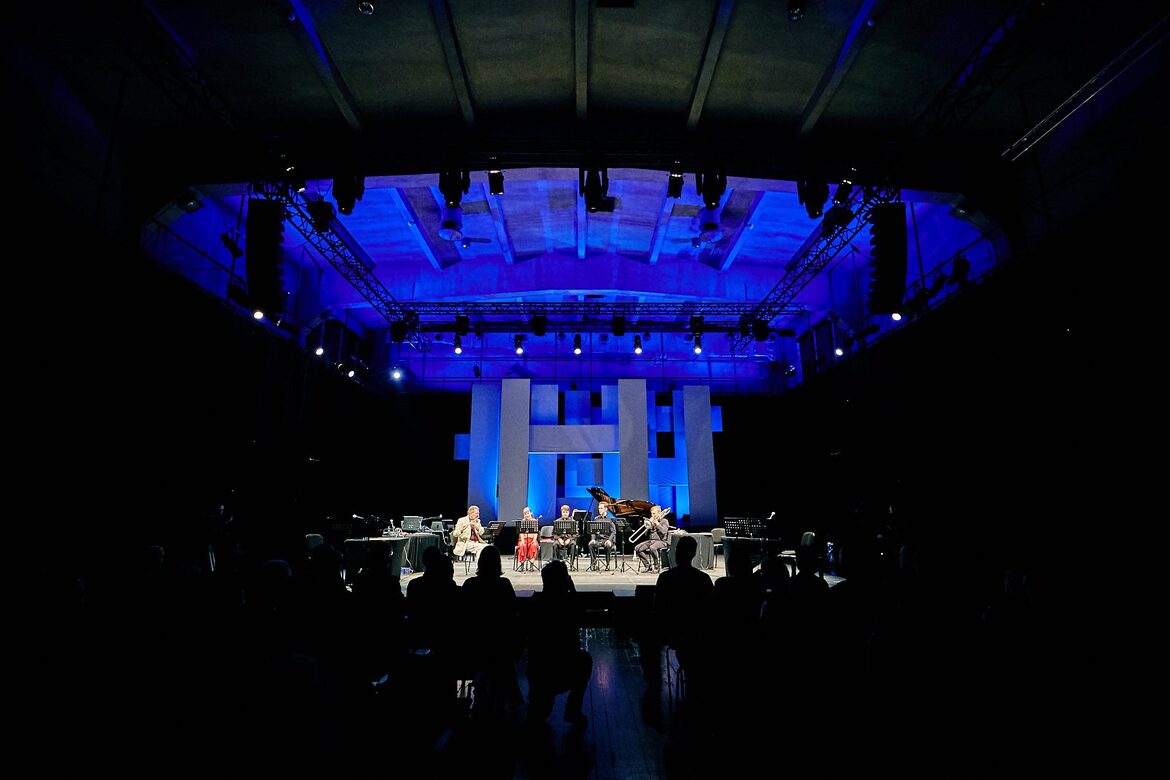 SEM performs at Sacrum Profanum Festival, Kraków, Poland, Sept. 2017
SEM performs at Sacrum Profanum Festival, Kraków, Poland, Sept. 2017
This program, originally presented 45 years ago – Song Books I, II; There is Singularly Nothing; and Macle – demonstrates the vitality of the forward-looking programming of SEM, guided by Petr Kotik, and the intrepid attitude of the musicians that have worked together under the name S.E.M. Ensemble.
The program was conceived for SEM’s first European tour in January and February of 1972, with concerts at WDR Cologne Funkhaus, the Akademie der Künste in Berlin, the Gemeindesaal in Düren, as well as concerts in Aachen and Geneva.
SEM started to study and perform Song Books in 1971, when Petr Kotik received a copy of the piece from John Cage, at that time still in manuscript form. There is Singularly Nothing is the first composition that Kotik wrote for SEM. It was the first time that Kotik composed music for voice, writing specifically for Julius Eastman’s three-octave voice range. It took some time for Kotik to find a suitable text and he decided on Gertrude Stein, whose texts he used for each of his compositions until 1978. Julius Eastman composed Macle for Petr Kotik and the S.E.M. Ensemble’s 1972 first European tour.
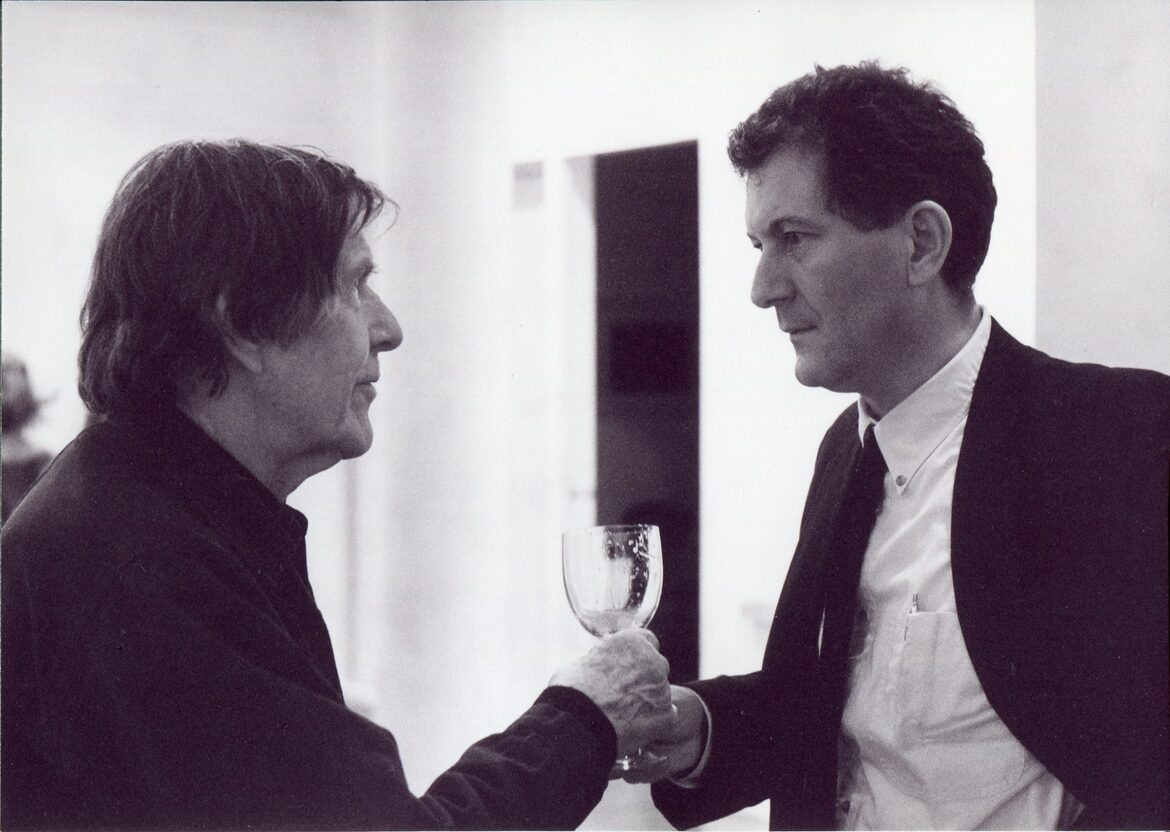
Petr Kotik and John Cage, Paula Cooper Gallery, NYC, 1989
Notes by Petr Kotik:
Toward the end of the 1960s, John Cage became increasingly concerned with politics. The Vietnam War radicalized Americans and Cage was not an exception. At that time, he started to dress in denim work clothes, even when he performed. His increasing concern for public affairs (politics) never really entered his music in any significant way as it did in the case of Cornelius Cardew or Frederic Rzewski. Song Books I, II may be a rare exception of a major piece with an underlying political message (even here, it is not an obvious statement and one has to have some knowledge about the piece to understand what is it about).
In 1982, S.E.M. Ensemble gave, to my knowledge, the only complete performance of Song Books – all 90 Solos for Voice performed over three hours with an ensemble of twelve. The performances were at the Whitney Museum in New York and at the Witten Opera House in Germany, with Cage in attendance at the performance and rehearsal. He also wrote a short program note, in which he emphasized the thrust of the content: Henry David Thoreau’s “Essay on Civil Disobedience.” Thoreau’s quote, used in Solo for Voice 35, is really quite central to understanding the piece: “The best form of government is no government at all and that is what we’ll have when we are ready for it.”
Song Books I, II symbolizes Cage’s concept of anarchy – in an artistic, social, and personal way – marked by an idea of noninterference of one individual to another, personal independence, and mutual respect among all involved. This is the kind of politics Cage followed all his life, a utopian, unattainable idea that he was striving for.
In the summer of 1970, eight months after moving from Czechoslovakia to the United States, I traveled with my wife Charlotta and our one-year-old son Thomas throughout the northeast. When we came to New York, I called Cage to get together, as I always did on my previous visits (we lived in Buffalo, NY then). To my surprise, this time Cage could not meet with me. He was fully occupied, explaining that he was working on a deadline. My English at that time was rudimentary at best – eight months before, I couldn’t speak English at all. I hadn’t heard the word “deadline” yet and I assumed that this must have been something to do with war trenches in Vietnam. I was wondering what on earth Cage was doing. When I returned to New York a few months later, Song Books was almost finished and parts of the score were scattered all over his loft on Bank Street. By then I had learned the meaning of the word deadline and realized that he was working on finishing Song Books. I was interested in the piece from the first time I looked at the music. We talked at length about various ways to do various solos. He made sure that I understood his idea – no rehearsals, no influence of one performer on another one, only at the performance should the musicians find out what the others are doing. Everyone does their thing with total independence. The piece was to demonstrate the harmony of this anarchistic situation. The piece was composed for dedicated to Cathy Berberian and Simone Rist.
Cage was planning to perform Song Books with them at the Carnegie Recital Hall (now the Weill Recital Hall). But there was a problem: the singers wanted to rehearse. “If they insist on rehearsing, I will cancel the performance” he said resolutely. And indeed, the performance never took place. For me, at that time, Cage’s directives were beyond reproach. We continued to perform Song Books in various versions with a changing list of performers but one performance was memorable. It was in 1974 in Albany, NY. Among the performers, Julius was the most successful. Months later, when I met David Tudor, he still talked, with admiration, about Julius’ Song Books. When Morton Feldman invited SEM to perform Song Books at the June in Buffalo 1975 festival, I was convinced that one of the main reasons was having Eastman performing it again. Julius already left the group, but I came back to him, and asked to perform it with us. He agreed. The SEM performance of Song Books at June in Buffalo is well known. Julius either misunderstood or sabotaged the piece and it caused a huge scandal. The next day, Cage changed his lecture and instead talked about the performance, screaming and pounding his fist on the lid of the classroom piano.
None of us at SEM, of course, had any idea what was coming during the performance, as we had never rehearsed the piece beforehand. Cage stormed the stage after the performance, coming directly to me, saying, “What was this supposed to mean?” I had no idea, I replied, reminding him that there were no rehearsals and no one had any idea about what is coming. “But you are the director, you are responsible!” he said resolutely into my face.
I was in shock and it took me some time to come to terms with what he said. In the end, I agreed with him. And as a performer, since this fateful moment, I have never been the same. Namely, as a director, conductor, or a leading member of an ensemble, I have to bear the full responsibility for the performance’s outcome. No excuses! Silly ideas by the composer about such things as “no rehearsals” must never stop me from rehearsing if I deem it necessary, ideas about an orchestra performance without a conductor must ever stop me from conducting if I deem it necessary. If I put my name on the program as the one responsible for the performance, I have to bear all the responsibility and act accordingly. This incident helped me to attain independence for the rest of my life. More than five years later, when SEM performed Song Books again, I agreed only under the condition that Cage come to some of the rehearsals. He agreed and this is what happened in 1982.
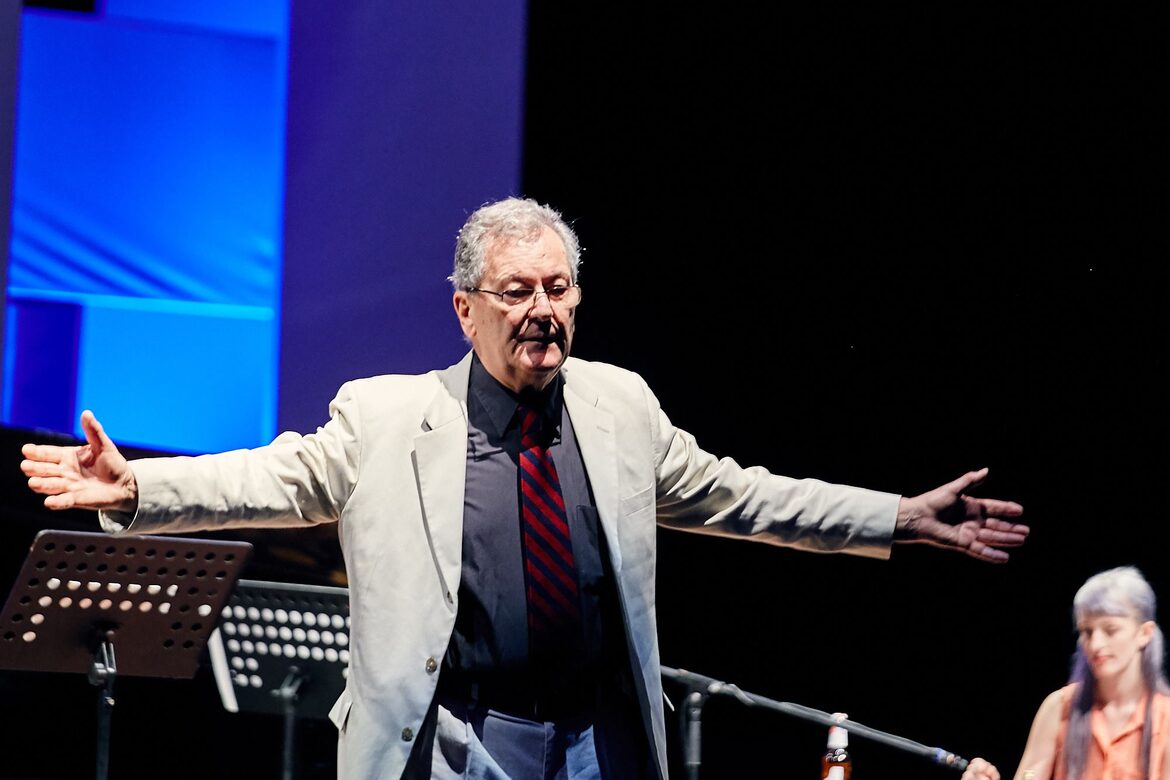 Petr Kotik at Sacrum Profanum Festival Concert, Krakoów, Poland - Sept. 2017
Petr Kotik at Sacrum Profanum Festival Concert, Krakoów, Poland - Sept. 2017
There is Singularly Nothing is a composition that consists of independent solo pieces that can be combined into ensembles or performed alone. The concept calls for any combination of any instruments, each solo transposed to suit a particular instrument or voice. The form is open; the piece does not have a distinct beginning or end. The duration is variable as well. This sounds like a chaotic jumble, but it is not. There are aspects to the composition, besides the above-mentioned basic instructions, that give the music a distinct character, easily recognizable despite all the variables. The most important is the musical style, and that is not free to individual interpretation, it is given. Next is the steady pulse among all performers that makes it possible to combine various parts into a cohesive ensemble.
My composition process is guided by intuition. In the case of my early works, there is very little that predicts or suggests the way and means of interpretation and only now, more than 40 years later, I can say that we finally know what this music is and how to perform it.
There is Singularly Nothing consists of 22 parts, 10 for voices and 12 for instruments. This material was composed without the idea that it would ever be performed in its entirety (although this is not out of question). Therefore, it offers a wide range of possibilities. This was nothing new and there are other pieces that make possible the same kind of excerpt performances, Cage’s Concert for Piano and Orchestra being perhaps best known. This is where the similarity to Cage starts and ends. A lot of improvised musical decision-making is being done on the spot during the performance, although everything is precisely notated and there are no possibilities to deviate from the score. Musicians listen to the whole and decide when to enter with their parts, stopping and start again, although the singers perform their parts without interruptions. The texts are excerpts from Gertrude Stein's 1926 lecture she gave at Oxford University entitled "Composition as Explanation." The lecture starts with the following words:
"There is singularly nothing that makes a difference a difference in beginning and in the middle and in ending except that each generation has something different at which they are all looking. By this I mean so simply that anybody knows it that composition is the difference which makes each and all of them then different from other generations and this is what makes everything different otherwise they are all alike and everybody knows it because everybody says it."
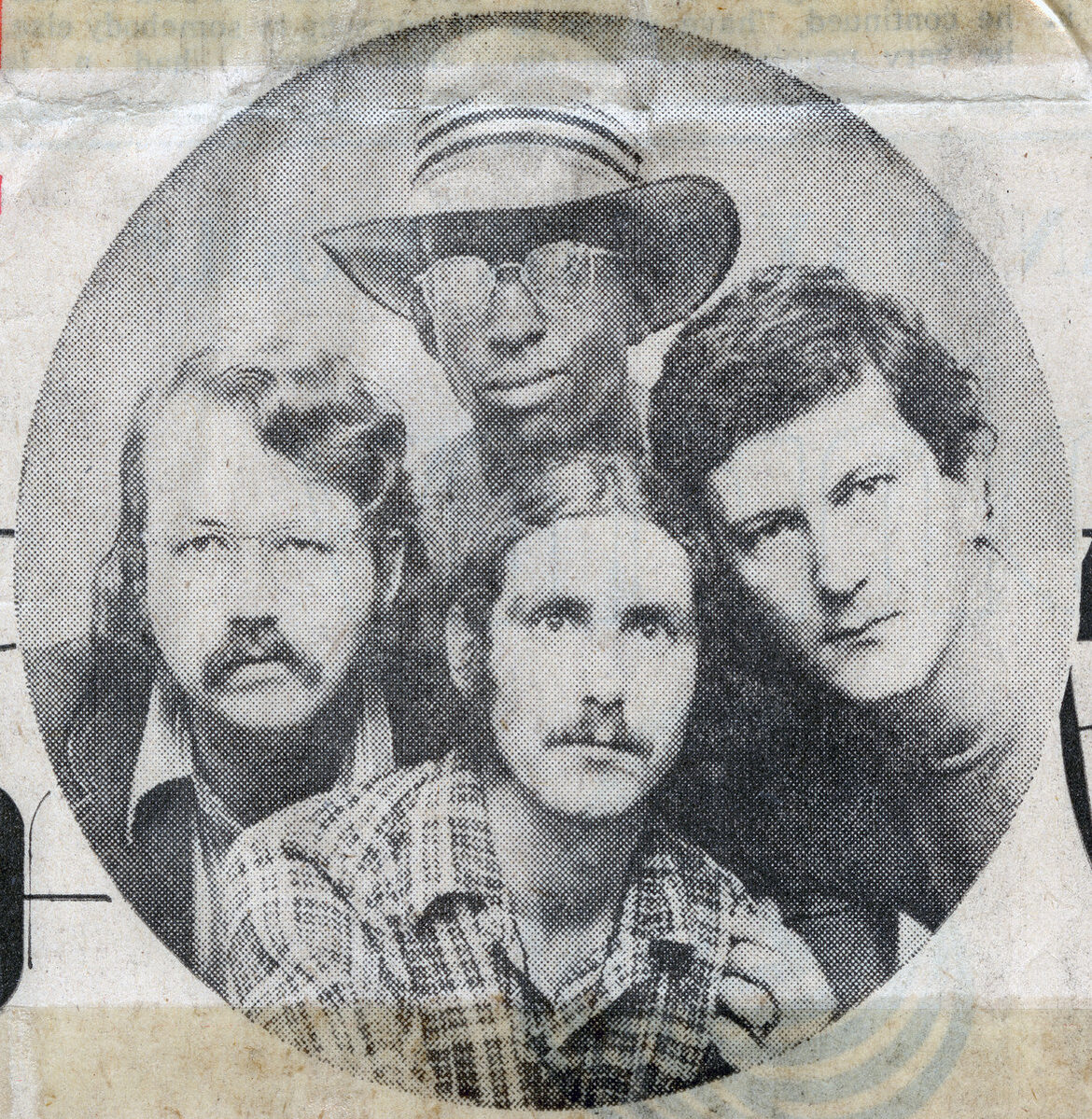 S.E.M. Ensemble, promotional photo, 1973
S.E.M. Ensemble, promotional photo, 1973
Julius Eastman composed Macle toward the end of 1971 (with minor changes made in January 1972) to be performed by 4 voices – not necessarily trained vocalists, although there is no reason to exclude real singers. The group that performed the piece then, and for whom it was composed, consisted of only one true vocalist – Eastman himself. The other performers were Petr Kotik (flutist), Jan Williams (percussionist), and Roberto Laneri (clarinetist).
A few words about Julius Eastman:
I met Julius Eastman shortly after my arrival in the U.S. in late 1969. It was at the SUNY Music Department’s building. He was standing by the wall in the corridor, reading some announcements. I didn’t know who he was, but I noticed him immediately—a very interesting looking person in an oversized English trench coat.
Shortly afterwards, I organized a small group of Creative Associates of the Center of the Creative and Performing Arts, of which I was a member. This is how the S.E.M. Ensemble started. Julius’ first performance with SEM was in April 1970, singing as a guest performer one part of Rudolf Komorous’ opera Lady Blanka Rosa. A few months later, he became a regular member of SEM and what followed was five years of very close collaboration between us. In those years, Julius and I were inseparable. Not only did we share ideas about music, performance, and composition, but living near each other made it possible to develop a close personal relationship. Julius’ house was just a short walk from ours, where I lived with my wife, Charlotta, and our children Thomas (b. 1969) and Jan (b. 1972). Julius was almost like another family member, frequently stopping by. His visits were mostly personal. When we rehearsed, it was at his house where he had a workspace in his large living room.
Our friendship was personal, but what really tied Julius and me were our performances and the music we composed. Both of us distanced ourselves from the prevailing post-Webern, Darmstadt-driven new music scene that was the norm in the U.S. at the time (this was the main reason for creating SEM). Arriving from then-Czechoslovakia, I found myself in a double world. On one hand, the musical environment I joined was practically the same as the one I left behind in Prague. From day one, my interactions with colleagues at the Center were no different than what I was used to back home or in my travels to Warsaw, Cologne, Vienna, etc. In this respect, my relocation to the U.S. was seamless and I was able to start working immediately. On the other hand, personally, I arrived in a country with a culture that I knew very little about and mostly didn’t understand. Even the language was a barrier, as I didn’t speak a word of English. Without the soprano Gwendolyn Sims, another Creative Associate who spoke German perfectly, I would have been completely lost.
Meeting Julius Eastman at this point was like coming home. My association with him was not unlike the one I maintained with my friends back in Europe. Julius returned to tonality with a new sensibility and approach. When we started to get to know each other and Julius played recordings of his music for me, I was impressed immediately. I will never forget listening to his piece for (I believe) five trumpets – this score, like most of Julius’ compositions, was lost. It was as inspiring as when I first heard, back in 1964, the Quartet with Accompaniment by Michael von Biel (for myself, this piece is still among the most significant of the 60s). As a composer, there was no one in Buffalo with whom I could have associated myself other than Julius Eastman, and I am sure he would say the same thing. We both struggled on the fringe of the new music scene and neither of us derived from our relationship anything else than mutual encouragement and inspiration.
S.E.M. Ensemble’s initial success in Europe was in part the residual interest in my earlier activities behind the Iron Curtain in Prague. We both benefited from it, using Europe to get a foothold in America and vice versa. Philip Glass describes his beginnings the same way. In the early 70s, Frederic Rzewski suggested that we all live in Iceland, right between the two continents. Artistically, this is probably what happened anyway.
Petr Kotik, Prague, October 30, 2017
This performance by the S.E.M. Ensemble is made possible by the generous support of the New York State Council on the Arts with the support of Governor Andrew Cuomo and the New York State Legislature; the New York City Department of Cultural Affairs in partnership with the City Council; Spyder Institute Praha; The Edwin H. Case Chair in American Music at Columbia University; The Aaron Copland Fund for Music, Inc.; The Phaedrus Foundation; The Low Road Foundation; The Fifth Floor Foundation; The Amphion Foundation; Ronald Feldman Fine Arts; Rackstraw Downes; Noni Pratt; Virginia Dwan; Raymond Learsy; Charlotta Kotik; Martina and Miloš Forman; C. Andrew Reynolds; William and Priscilla Newbury; Julian Lethbridge and Stephen J. Deutsch. Special thanks to Jasper Johns, Werner Kramarsky, and NYC Councilmember Stephen T. Levin.
Upcoming Concert
The S.E.M. Ensemble presents its annual holiday concert:
Musica Elettronica
Stockhausen, Niblock, Kotik, Spiegel, Schumacher
at Paula Cooper Gallery, Mark di Suvero exhibition
534 W. 21st St. New York, NY
Friday, December 9, 8:00 pm
Advanced sale tickets: $15, $10 for students/seniors
Door tickets: $20, $15 for students/seniors
available here from Brown Paper Tickets
NOTE: There will be a FREE preview concert of this program Dec. 7 at 8 pm at Willow Place Auditorium, 26 Willow Pl. Brooklyn Heights, NY
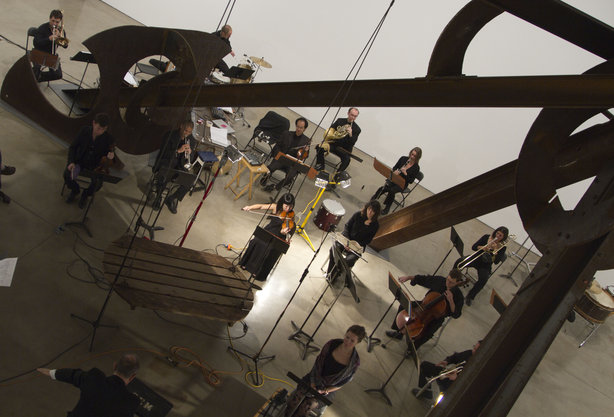
SEM at PCG, Mark di Suvero exhibit, 2011
Preview Concert:
Wed. Dec. 7 at 8 pm at Willow Place Auditorium
26 Willow Pl. Brooklyn Heights, NY
Free admission
Program
Phill Niblock: Praised Fan (2016) American premiere
Dafne Vicente-Sandoval, bassoon
Karlheinz Stockhausen: Gesang der Jünglinge (1956)
Petr Kotik: Kontrabandt (1967)
Michael J. Schumacher: Filters and Filtered (2011-present)
Laurie Spiegel: A Harmonic Algorithm (2011)
"SEM continues to play a critical role in New York's musical life."
- The Guardian, May 9, 2016
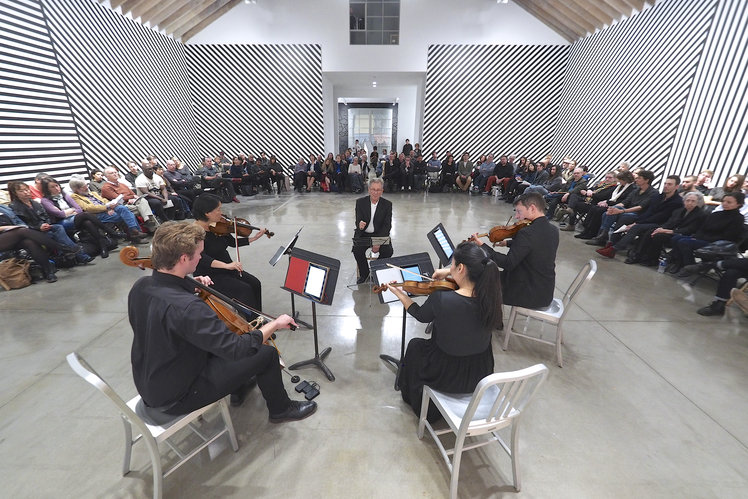
SEM at Paula Cooper Gallery, October 2016
Program Notes
Phill Niblock: Praised Fan (2016) – American premiere
This 17-minute work is based on microtonal variations around three pitches (G#, A, Bb), played in different octaves. These variations not only affect the pitch, but also the timbre and partial balance, and their layering creates complex melodies of overtones, as well as rhythmical patterns produced by tonal beatings. The work, commissioned by the Adelaide Festival in Australia, will be performed by French bassoonist Dafne Vicente-Sandoval.
Karlheinz Stockhausen: Gesang der Jünglinge ("Song of the Youths") (1956)
Hailed by many as the first masterpiece of electronic sounds, this 13-minute composition for magnetic tape and five loudspeakers integrates electronic sounds with the voice of a boy soprano singing fragments from the Book of Daniel. With it, Stockhausen tested and employed for the first time the idea of “music in space” that would finds its radical expression in Gruppen (1955-57). The work received its world premiere at West German Radio (WDR) in Cologne in 1956.
Petr Kotik: Kontrabandt (1967)
Petr Kotik met Stockhausen for the first time in the spring of 1965 when he visited the Studio for Electronic Music at WDR. In 1966 he received a commission from WDR to compose and realize a piece of electronic music. Scored for musicians and magnetic tape, Kontrabandt is a live electronic music work, in which performers manipulate sound sources, including 80 pre-recorded segments realized at the Studio for Electronic Music and ranging from a split second to one and a half minutes in duration. The work premiered in Cologne in 1967 as part of the WDR concert series “Musik der Zeit.”
Michael J. Schumacher: Filters and Filtered (2011-present)
Filters and Filtered is a 20-minute spatial sound installation originally composed for 8 channels and adapted to 4 for this performance. A "filter" is anything that comes between the transmission and reception of the signal, including equalization, bit reduction, wave-shaping, phase shifting, acoustic treatment, room resonance, masking, as well as other psycho-acoustic effects. The structure is derived from algorithms that combine elements of serial and aleatoric techniques. Filters and Filtered was presented in 14 channel versions at AVA Gallery in New York, iMAL in Brussels and at Ultraschall in Berlin.
Laurie Spiegel: A Harmonic Algorithm 2011
The work is the third incarnation of a computer algorithm that composes music first coded on Spiegel’s Apple II computer around 1980. Instead of creating a finite number of works, Spiegel had the idea to encode in computer software her personal compositional methods, and musical and aesthetic decisions so that new music could be composed and generated long after the biological human had ceased to exist. This particular software, based on the harmonic progressions of Bach’s chorales, merges Bach and Spiegel’s musical selves. The work was commissioned by the Barcelona Museum of Contemporary Art.
Upcoming Concert
S.E.M. Ensemble at Paula Cooper Gallery
Sol LeWitt Exhibition
534 W. 21st St. New York, NY
Tues. October 11, 2016, 8:00 pm
Tickets: $15 advance, $20 same day
available here from Brown Paper Tickets
Patron tickets: $300
includes reserved prime seating, $285 tax-deductible donation
To purchase, contact SEM directly at (718) 488-7659 or pksem@semensemble.org
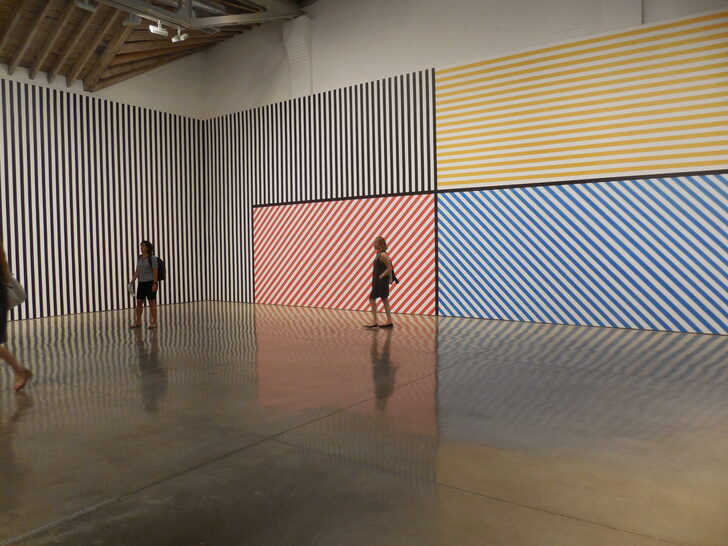
Sol LeWitt, Wall Drawing #368, Paula Cooper Gallery
Program
Petr Kotik: William William (2016) American premiere
Choreography by Matilda Sakamoto
Alvin Lucier: Navigations for Strings (1991)
Alvin Lucier: Love Song (2016) World premiere
S.E.M. Ensemble
Lucy Dhegrae, Soprano; Jake Ingbar, Baritone; Adrian Rosas, Bass;
Debra Kay Anderson, Narrator; Conrad Harris and Pauline Kim Harris, Violin;
Liuh-Wen Ting, Viola; Caleb van der Swaagh, Violoncello; John Altieri, Tuba
Petr Kotik, Conductor
Dancers
Matilda Sakamoto, Victor Lozano, Alex Andison, Connor Bormann
"SEM continues to play a critical role in New York's musical life."
- The Guardian, May 9, 2016
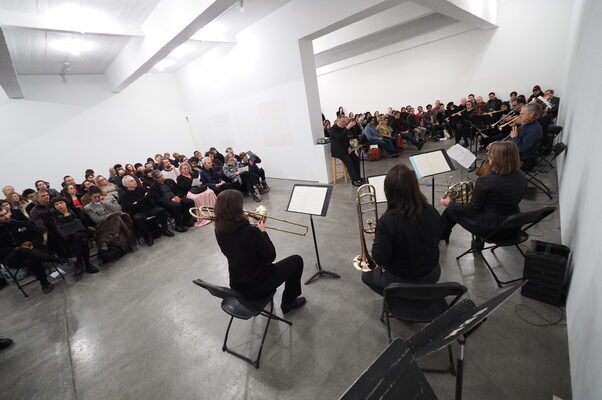
SEM at Paula Cooper Gallery, December 2015
I am delighted to present a concert during the Sol LeWitt exhibit. Although Sol and I never met, he has, since the 1980s, regularly supported SEM. The music we perform must have been the reason. More than often, our programs are not in line with the prevailing trends or popular taste of the moment. Together with other artists, composers, and music followers, LeWitt’s support gave us the encouragement to go forward, because one cannot do it alone. That is certain.
Every generation struggles with the impossible task to redefine its art, not for the sake of doing something new – that itself is not interesting. We have to redefine our work because using the means from the past is banal in the view of every day’s new reality. Nothing changes from generation to generation except composition (Gertrude Stein). The meaning of the work continues to be unabated, but the composition has to change as the world around us changes. When one paints, draws, or creates objects, listening is more important than looking. A composer on the other hand must shut his or her ears because for a composer, looking is more important than listening. This may be the reason why music and art have been close companions for generations.
The wall drawings by Sol LeWitt are case in point. They are closer to music than to the way we understand visual art. All the fundamentals of music composition are here in place: there is a score (i.e. instruction for the realization), there are performers (who execute the score), and there is duration for the piece to exist. What has been actually redefined here – art or music?
– Petr Kotik
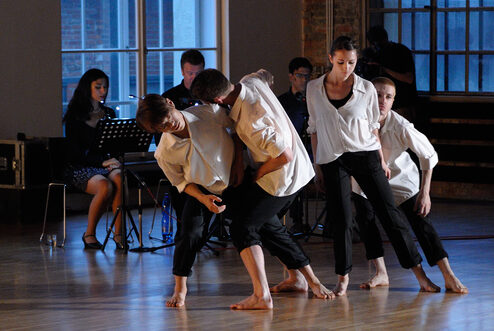
SEM and dancers perform Kotik's William William at NODO 2016, Ostrava, Czech Republic
I met Sol first through Andrea Miller-Keller who was his most eloquent and important friend and critic. Andrea suggested that Sol and I exchange works.
Sol was known for his ecumenical taste in art and had a huge collection of works by hundreds of artists. He gave me a wall drawing (#724) and I reciprocated with the hand written score of my quartet, Navigations for Strings. I was doubly honored that he later borrowed a panoramic photograph of part of the Swiss Alps that I had used in Panorama, a duo for piano and trombone, for Zug III, a gorgeous multi-colored wall drawing. More recently he asked me to supply music for his Curved Wall, an enormous sculpture first shown in Graz, Austria, later at Wesleyan. Sol LeWitt was the most kind and generous artist I have ever known.
– Alvin Lucier
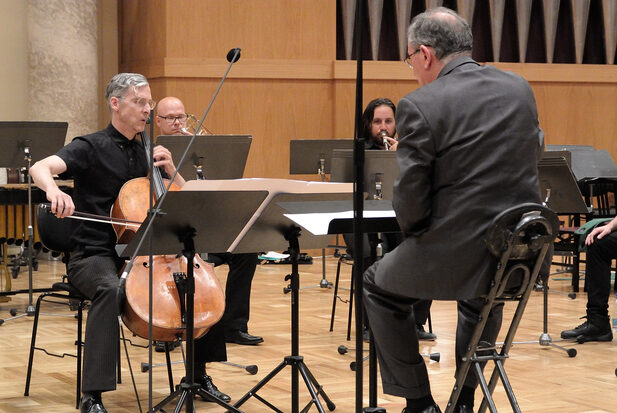
Kotik conducts the premiere of Lucier's Orpheus Variations, November, 2015
